Pathans of Gujarat
Gujarati Pathans are a group of Pathans. At various times in history, numerous Pashtuns have settled in the region of Gujarat in western India. They now form a distinct community of Gujarati speaking Muslims. They are distributed throughout the state, but live mainly in Ahmedabad, Rajkot, Junagadh, Surat, Bhavnagar, Panchamahal, Koth, Kotha, Borsad, Kheda, Banaskantha, Bharuch, Gandhinagar, Sabarkantha, Vadodara and Mehsana. They speak Gujarati, with many Hindustani loanwords. Common Tribes include Babi or Babai (Pashtun tribe), Khan, Bangash, Durrani, and Yousafzai.[2]
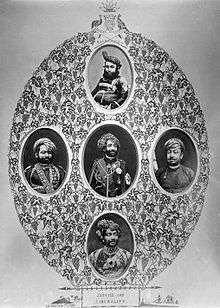 Junagadh Nawabs and state officials, 19th century | |
| Total population | |
|---|---|
| 254,000[1] | |
| Regions with significant populations | |
| India and Pakistan Afghanistan | |
| Languages | |
| Gujarati • Pashto• Hindustani • English | |
| Religion | |
| Islam | |
| Related ethnic groups | |
| Pashtun • Rohilla • Pathans of Uttar Pradesh • Pathans of Rajasthan • Pathan of Bihar • Pathans of Punjab • 30-35% of the Muhajir people |
History and origin
The Pathans arrived in Gujarat during the Middle Ages onwards, as soldiers in the armies of the various Hindu and Muslim rulers of the region. Historical evidence suggests that the earliest settlement of the Pashtuns was during the rule of Mohammad Tughlak in the 14th Century, when military colonies were established.,[3] it is also possible that many accompanied and formed part of the army of Mahmud of Ghazni in his invasions of Gujarat in 1024AD.(Early Ghaznavid History and Artifacts in Hansot & Tadkeshwar settlements in Surat District)[4] Quite a few arrived during the rule of Mahmud Begada, and over the course of time spread over the entire the state of Gujarat. During the period of Mughal rule over Gujarat, there was further settlement of Pashtuns. With the breakup of the Mughal Empire, the Babi or Babai (Pashtun tribe) and Jalori Pathans became rulers of the princely states of Junagadh and Palanpur. The 19th Century saw a further settlement of Pashtuns, mainly Ghilzais Tanoli from Afghanistan, with many settling in the cities of Ahmedabad, Surat and Khambhat. They are divided into twelve lineages, the main ones being the Babi or Babai , Sama, Khanzada, Yousafzai, Lohani, Mandori, Suleiymani, Surat Turk, Miani and Zadran. The bulk of the Gujarat Pathans belong to the Jalori.[2]
Princely States
The Pathans of Gujarat were rulers of a number of princely states, the main ones being Balasinor, Radhanpur, Palanpur(Bihari, Lohani,Pathan)and Junagadh.
Balasinor
Balasinor (also referred to as Vadasinor) is a town located in the Kheda district, in Gujarat, India. Balasinor State was a princely state of the Babi dynasty and was created on 28 September 1758 by the Junagadh State Babi Dynasty, of which famous Bollywood actress Parveen Babi is a descendant. The current nawab is HH Nawab Babi Shri Muhammed Salabat Khanji II.[5]
Junagadh
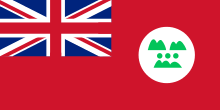

Mohammad Sher khan Babi, who owed allegiance to the Mughal governor of Gujarat subah, founded the state of Junagadh and declaring independence in 1730 after Marathas Gaikwad invasion. Muhammad Sher khan Babi, was the founder of the Babi Dynasty of Junagadh State dynasty. His descendants, the Babi Nawabs of Junagadh, conquered large territories in southern Saurashtra and ruled over the state for the next two centuries, first as tributaries of Marathas, and later under the suzerainty of the British. Nawabs of Babi dynasty:
- 1730 - 1758 : Mohammad Bahadur Khanji I or Mohammad sher khan Babi[6]
- 1758 - 1774 : Mohammad Mahabat Khanji I
- 1774 - 1811 : Mohammad Hamid Khanji I
- 1811 - 1840 : Mohammad Bahadur Khanji I
- 1840 - 1851 : Mohammad Hamid Khanji II
- 1851 - 1882 : Mohammad Mahabat Khanji II
- 1882 - 1892 : Mohammad Bahadur Khanji II
- 1892 - 1911 : Mohammad Rasul Khanji
- 1911 - 1948 : Muhammad Mahabat Khanji III
 Mohammad Mahabat Khanji II, the Nawab of Junagarh, with young, Mohammad Bahadur Khanji III. 1870s.
Mohammad Mahabat Khanji II, the Nawab of Junagarh, with young, Mohammad Bahadur Khanji III. 1870s.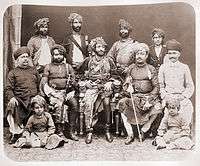 Bahadur Khanji III (r. 1882-1892), Nawab of Junagadh, and state officials, 1880s.
Bahadur Khanji III (r. 1882-1892), Nawab of Junagadh, and state officials, 1880s. Mohammad Rasul Khanji, Nawab of Junagadh, Bahaduddinbhai Hasainbhai, Wazier, Junagadh, 1890s.
Mohammad Rasul Khanji, Nawab of Junagadh, Bahaduddinbhai Hasainbhai, Wazier, Junagadh, 1890s.
The East India Company took control of the state in 1818, the present old town Junagadh, developed during the 19th and 20th centuries, is one of the former princely states which were outside but under the suzerainty of British India. Some of the Babi Pashtun who were the rulers and from the lineage of Junagadh state still lives in Gujarat. The main ones were the rulers of Ranpur Sorath, Devgam, Matiyana, Bamangadh and Bantva.
:Palanpur -Lohani(Hetani), Vihari(Bihari) Family.
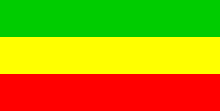
Palanpur was the seat of Palanpur State, a princely state ruled by the Lohani/Hetani, Bihari(Pathan)( Jalori ) dynasty of Afghans. 'While the earlier history of the family is who established themselves in Bihar during the twelfth century and ruled there as Sultans. Malik Khurram Khan vihari (Bihari), the founder of the Palanpur house, left [[Bihar]and that's why some lohani pathans known as Bihari Pathan in palanpur region] and entered the service of Vishaldev of Mandore during the late fourteenth century. Appointed Governor of Songad or Jhalor, he took control of that place in the confusion that followed the death of the Mandore ruler'; a forebear of the family is reputed to have wed the foster-sister of the Mughal emperor Akbar and received Palanpur and surrounding areas as dowry. However, the family comes into historical prominence during the period of instability that followed the demise of Aurangzeb in the early 18th century. It was overrun soon afterwards by the Marathas; the Lohanis followed the trend of seeking recourse in the British East India Company against them and finally entered the subsidiary alliance system in 1817, along with all other neighbouring states.
The state encompassed an area of 1766 km² (682 mi²) and a population, in 1901, of 222,627. The town of Palanpur housed a population of only 8000 people that year. The state commanded a revenue of approximately Rs.50,000/- per year. It was traversed by the main line of the Rajputana-Malwa Railway, and contained the British cantonment of Deesa. Wheat, rice and sugar-cane were the chief products. Watered by the Sabarmati river, the state was heavily forested in its northern reached (the present-day Jessore sanctuary) but undulating and open in the south and east. The country was on the whole somewhat hilly, being at the edge of the Aravalli Range. The present Nawab sahab of Palanpur state is HH Diwan Khan MahaKhan Nawab sahab shri Muzaffarmuhammadkhanji Bahadur. 48 Nawabs ruled in palanpur. Other Lohani(Hetani), Bihari(Pathan) origion belongs From Abhganistan. They ruled on palanpur and belongs from same family of Palanpur Nawab (Bhayat Jagirdar) and they are Live in nearest villages of Palanpur state as a Muslim jagirdar right now.
Radhanpur
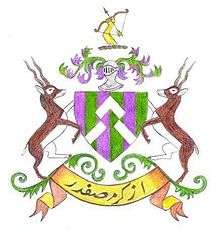
The State of Radhanpur was established in 1753 by Jawan Mard Khan II, son of Jawan Mard Khan I. Later, Radhanpur city became the capital of the princely state of Radhanpur under Palanpur Agency of Bombay Presidency. It was a walled town, known for its export trade in rapeseed, grain and cotton.
Radhanpur came under British control in 1813. Even so, the Nawabs minted their own coins until 1900, when the state adopted the Indian currency; a particularly forward-looking Nawab briefly introduced decimalization, with 100 fulus equaling one rupee. Still, India did not decimalize its currency until 1957.
The state has been held by the Babi family since 1753, when Jawan Mard Khan II obtained the districts of Pattan, Vadnagar, Sami, Munjpur, Tharad, Visalnagar, Kheralu, Radhanpur, Tharwarah, and Vijapur from the Marathas. They were related to the ruling houses of Junagadh and Balasinor, two other Gujarat states. After the death of Bismillah Khan in 1895, Radhanpur was put in the charge of British officers who took over the treasury and the administration until the nawab's successor, who was a minor, came of age. In 1907 Haji Muhammad Sher Khanji was invested with full powers, but he died in 1910, and was succeeded by his brother. The state covered 1,150 square miles (3,000 km2), with a population (1901) of 61,403.
The Diwan of Palanpur enjoyed a Salute of 13 guns and the Nawab of Radhanpur enjoyed a Salute of 11 guns.
Present circumstances
A process of indigenization has occurred, and the Pathans are now indistinguishable from other Gujarati Muslims. With the coming of independence from British rule in 1947, the community has seen the disappearance of their traditional occupations. The greatest concentration of Pathans is in the city of Baroda, followed by Kaira, Mehsana and Banaskantha. They also have their own villages, and are mainly cultivators. Many are now employed by the State transport corporation as Mechanics, while others have opened garages. As a largely urban community, many are now employed in the textile industry. They are Sunni Muslims, and like other Gujarati Muslims, have their own caste association, the Gujarat Pathan Jamat.[2]
Sub-Divisions
The Pathans of Gujarat include three distinct endogamous communities, the Pathan Khanzada, the Babi or Babai (Pashtun tribe) and the Sama.
Babi Pathans
The Babi or Babai (Pashtun tribe) arrived in Gujarat during the rule of Mughal Empire. After the collapse of the Mughal Empire, the Babi were involved in a struggle with the Maratha Gaekwads for the control of Gujarat. While the Maratha were successful in establishing overall control over Gujarat, the Babi remained masters of the princely states of Junagadh, Radhanpur, Balasinor, Bantva Manavadar etc. They are found throughout north Gujarat and Saurashtra. Most Babi, barring the princely lineages, are in modest circumstances. Many are petty landowners, but there is marked urbanization among the Babi. The Babi are endogamous, but there are cases of marriages with the Chauhan and Behlim communities, and they accept daughters from the Shaikhs and Sunni Bohras.[7]
Kabulis
The term Kabuli literally means any inhabitant of the city of Kabul in Afghanistan. In Gujarat, the term was applied to any Pashtun who arrived in Gujarat during the 19th Century, the majority of whom were Ghilzais. Historically, the community were traders, buying horses from Kathiawar and selling them in Rajputana and Deccan. They are found mainly in Ahmedabad, and speak Hindustani as well as Gujarati. Some older members of the community can still speak Pashto. To a great extent, they form a distinct community, marrying among themselves, little interacting with other Gujarat Pathans.[8]
Sama Pathans in Borsad Town
The Sama are Yousafzai Pathan, who trace their ancestry to the village of Sama or Samra, near the city of Peshawar. They came as soldiers in the armies of the Nawabs of Khambhat. From here, they went to Borsad to afford protection to the local Muslims who were being harassed by the Marathas. The Pashtuns were led by a Musa Khan, who was successful in expelling the Marathas. In gratitude, the local Malik chief gave his daughter in marriage, and the village of Raja mohalla, Gujarat. Musa Khan’s descendants are now known as the Sama Pathans. They are a localized community, only found in Borsad, and villages around the town. The community is also in the process of urbanizations, with many migrating to Ahmedabad. They are strictly endogamous, practising both parallel and cross cousin marriages. On rear occasions, marriages do take place with the Babi Pathans and or rarer with the Malik communities.[9]
Pathan Khanzada
The Khanzada are found in the village of Pandu of Savli tehsil of Baroda District. They are said to have come from Kabul, under the leadership Mahabat Khan Daulat Khanji Khanzada, who was granted the village of Pandu by Sultan Mahmud Begada. They were an influential local rulers until the rise of Gaikwad rulers of Baroda, who annexed their state and reduced to them to the position of jagirdars. They are distinct from other Gujarat Pathans in that they speak Gujarati and not Hindustani. They are strictly endogamous, not marrying into other Pathan groups. The community practice both cross-cousin and parallel cousin marriages. They are still a landowning community, with many still being fairly large landowners. The Khanzada grow tobacco and sorghum, selling their crops to the traders of Kheda. They have informal caste association, which maintains strict social control over the community.[10]
The Bangash and Zadran
Pathans of the Bangash and Zadran tribes are one of the earliest Pashtun settlers in Gujarat. They were originally settled in the town of Patan by the early sultans of Gujarat on military tenures. They then spread in the districts of Palanpur and Unjha, and played key role in the history of the states of Palanpur and Radhanpur. Unlike other Gujarat Pathans, they speak Gujarati. The community are still mainly landowners and cultivators, and are found mainly in Mehsana district.[11]
Galleries
 Indian cricketer Irfan Pathan |
See also
- Pashtun
- Pashtun diaspora
- Pathan of Bihar
- Pathans of Rajasthan
- Rohilla
- Pathans of Uttar Pradesh
- Pathans of Punjab
- 30-35% of the Muhajir people
References
- Joshua Project. "Pashtun, Pathan in India". Joshua Project. Retrieved 23 December 2015.
- People of India Gujarat Volume XXI Part Three edited by R.B Lal, P.B.S.V Padmanabham, G Krishnan & M Azeez Mohideen pages 1115-1125
- Muslim Communities in Gujarat by Satish C Misra pages 108-109
- Tadkeshwar
- Balasinor State Archived 27 March 2010 at the Wayback Machine
- Nawabs of Junagadh Archived 9 February 2012 at the Wayback Machine British Library.
- Muslim Communities in Gujarat by Satish C Misra pages 110-111
- Gazetteer of the Bombay Presidency, Gujarat Population: Musalmans and Parsis, Volume IX pages 13 to 14 Government Central Press, Bombay
- Muslim Communities in Gujarat by Satish C Misra pages 108-111
- People of India Gujarat Volume XXI Part Three edited by R.B Lal, P.B.S.V Padmanabham, G Krishnan & M Azeez Mohideen pages 1121-1125
- Gazetteer of the Bombay Presidency, Gujarat Population: Musalmans and Parsis, Volume IX pages 8 to 9 Government Central Press, Bombay
- Moazzam beg khans team member names, team leader Moazzam Beg.
.jpg)